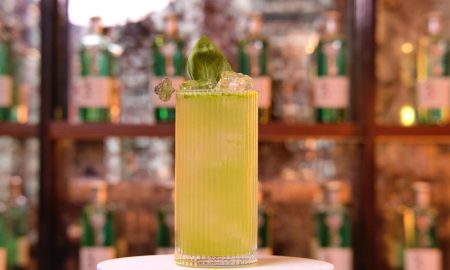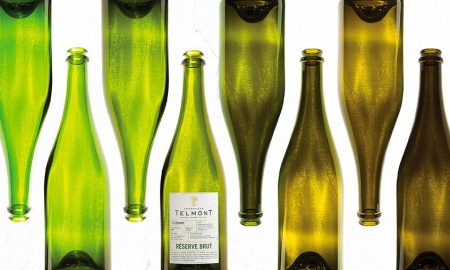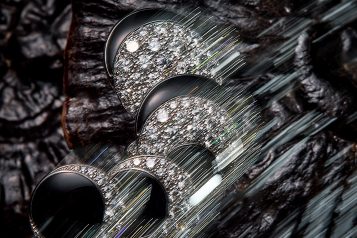
It can be difficult to know what to expect from a bottle of Champagne if it isn’t a brand name—but there are some terms to look for that can suggest higher quality and give you an idea about the overall style.
NM, RM AND CM
There are several types of producers in Champagne, which are always identified on the label with a two-letter abbreviation: NM, RM or CM. Here is what they meant and why they matter.
- Negociant Manipulant (NM) refers to a producer that buys the majority of their grapes from growers in the region. NM producers are usually larger houses (like Krug, Bollinger, or Dom Pérignon) with long-established reputations for quality. The majority of NM Champagnes are made in a very clean, well-structured style. If you don’t know the producer, a NM is often a safe bet.
- Recoltant Manipulant (RM) and Cooperative Manipulant (CM) producers work a little differently. RM Champagne producers grow all the grapes and make their own Champagne. CM producers pool their resources with other growers to make Champagne from their collective grapes. RM Champagnes can be variable in quality, but the best are among the highest-quality in all of Champagne. They can range in style, from very earthy to super-clean to austere. It is best to consult a trusted source like Wine Access, as these smaller producers often have limited information available online. RM and CM Champagnes can also be among the best values in Champagne. Often these growers make most of their money selling grapes to famous or even luxury houses (e.g. Champagne M. Brugnon sells to Krug and Dom Perignon, while their Champagne sells for a fraction of the price). When you find these, we recommend stocking up on them.
NON-VINTAGE/MULTI-VINTAGE VERSUS VINTAGE
Many wine lists are abbreviating a wine that is a blend of vintages as MV—meaning multiple vintages—instead of NV—or non-vintage—as technically all wines come from a vintage! Here are the differences between non-vintage/multi-vintage versus vintage, and why it matters.
- MV/NV: These wines are meant to be more approachable and, in general, are not meant to be aged for long periods of time. By utilizing reserve wines and blending vintages, MV Champagnes are meant to showcase a house style rather than the characteristics of a specific vintage. For a wine for immediate consumption, a MV is the better choice.
- Vintage: These wines are meant to showcase a specific vintage and should improve with age. Note that vintages are not declared by the region but are decided on the producer level. A Vintage Champagne is a wiser wine for cellaring. In their youth, vintage Champagnes can actually show in a more austere style than MV.

DOSAGE LEVELS
You can tell the sweetness level of the wine from the Dosage level. Dosage references the amount of sugar added, if any, at disgorgement. While most producers don’t list the exact dosage, there are terms for the different levels of sweetness. These have nothing to do with quality, but can tell you if the Champagne is in your preferred style. Here are the different dosage levels and what they mean.
- Brut Nature/Non-Dosage: The Champagne has not been sweetened and is bone dry
- Extra Brut: The Champagne is very dry (0-6g/L of sugar)
- Brut: The Champagne is dry but might feel more plush on the palate (0-12g/L of sugar)
- Extra Dry: The name ‘Extra Dry’ can be confusing as it sounds like it should be a very dry style, but it actually has a touch of sweetness (12-15g/L of sugar)
- Demi Sec: The Champagne is noticeably sweet, a rare style (32-50g/L of sugar—roughly one-third the sweetness of Coca-Cola)
BLANC DE BLANC VERSUS BLANC DE NOIRS
For all practical purposes, there are three grapes allowed in the production of Champagne: Chardonnay, Pinot Noir and Meunier. Though Champagne is generally a white (and occasionally a rosé) wine, only Chardonnay is a white grape. There are two terms that sometimes appear on a Champagne label that can give you information on these blends, and an idea of the style. If the label does not have either on the label, that means they are probably a blend of the three grapes, existing somewhere on a spectrum between these two styles:
- Blanc de Blanc: A Blanc de Blanc Champagne is made entirely from Chardonnay (literally translating to “white from white”), which makes for brighter, laser-focused, green apple-flavored Champagne
- Blanc de Noirs: A Blanc de Noirs Champagne is made entirely from Pinot Noir or Meunier (literally translating to “white from reds”), which tends to make for broader, richer Champagnes with red apple and/or white raspberry flavor hints

IMPORTANT VILLAGES & VINEYARDS
There are 17 Grand Cru and 42 Premier Cru Villages in Champagne that have been singled out for the quality of their grapes. Though there are many Champagnes of note made from other villages, if they appear on the label, they are usually a sign of a better quality bottle. If a wine label says Grand Cru or Premier Cru without a village listed, it merely means it is a blend from more than one village, but will be of similar quality. Similarly, there are some vineyard sources that are renowned for quality, these include Clos du Mesnil, Clos d’Ambonnay, and Clos des Goisses. Here are the noteworthy Grand Cru and Premier Cru villages to look for:
- Noteworthy Grand Cru Villages: Ambonnay, Avize, Ay, Bouzy, Cramant, Mailly Champagne, Le Mesnil-sur-Oger, Verzenay, Verzy
- Noteworthy Premier Cru Villages: Mareuil-sur-Ay, Vertus, Hautvillers, Ecueil, Dizy























